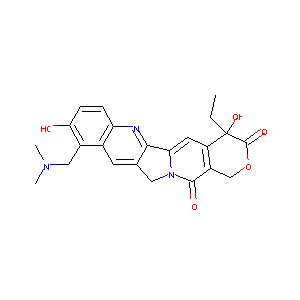| 1 |
Loss of function mutations in VARS encoding cytoplasmic valyl-tRNA synthetase cause microcephaly, seizures, and progressive cerebral atrophy.Hum Genet. 2018 Apr;137(4):293-303. doi: 10.1007/s00439-018-1882-3. Epub 2018 Apr 24.
|
| 2 |
URL: http://www.guidetopharmacology.org Nucleic Acids Res. 2015 Oct 12. pii: gkv1037. The IUPHAR/BPS Guide to PHARMACOLOGY in 2016: towards curated quantitative interactions between 1300 protein targets and 6000 ligands. (Ligand id: 6840).
|
| 3 |
Pralatrexate FDA Label
|
| 4 |
FDA Approved Drug Products from FDA Official Website. 2009. Application Number: (NDA) 020671.
|
| 5 |
Hughes B: 2009 FDA drug approvals. Nat Rev Drug Discov. 2010 Feb;9(2):89-92.
|
| 6 |
Antifolates in cancer therapy: structure, activity and mechanisms of drug resistance. Drug Resist Updat. 2012 Aug;15(4):183-210.
|
| 7 |
Pralatrexate : evaluation of clinical efficacy and toxicity in T-cell lymphoma. Expert Opin Pharmacother. 2013 Mar;14(4):515-23.
|
| 8 |
Clinical pipeline report, company report or official report of GlaxoSmithKline (2009).
|
| 9 |
Recurrent recessive mutation in deoxyguanosine kinase causes idiopathic noncirrhotic portal hypertension.Hepatology. 2016 Jun;63(6):1977-86. doi: 10.1002/hep.28499. Epub 2016 Mar 31.
|
| 10 |
Biologically active neutrophil chemokine pattern in tonsillitis.Clin Exp Immunol. 2004 Mar;135(3):511-8. doi: 10.1111/j.1365-2249.2003.02390.x.
|
|
|
|
|
|
|


